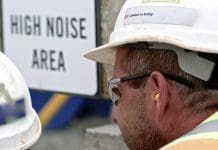Paul Beaney, Customer Success Director at DEF Software, discusses Biodiversity Net Gain and the impact on local authorities in regards to planning applications, with a focus on legislation, what action planning departments need to take as well as challenges such as how biodiversity can be measured and enforced
With the destruction of natural environments and the rise of extreme weather events taking place at ever increasing intervals across the globe, the pressing need to promote better environmental practices across all industries has been brought into sharp focus in recent years.
The planning and construction sector can often be viewed as the enemy of environmental progress, particularly when it comes to building on rural land. But this isn’t always the case, and we are starting to see the emergence of housing and developments that are more eco-conscious, designed to complement the landscape and support its growth. We are also starting to see a rise in the use of sustainable building materials, such as bamboo and recycled steel.
It is, however, impossible to ignore the impact that construction has on our native wildlife in the UK, with the noise and light pollution often driving protected species away, as well as destroying plant life and organisms that play an important role in our ecosystem.
A recent government publication claimed that 15% of species within the UK are threatened with extinction, and since 1970 the abundance of UK priority species has declined by 60 per cent. Part of our current planning process is in place to ensure this doesn’t happen and that new developments cause the least damage possible.
Following the COP26 climate change conference held in Glasgow, last year and pressure from action groups, making changes that positively affect the environment continue to be high on the agenda for the UK Government, especially as it is currently reviewing the planning process to create widespread reform.
A new legislation to promote the increase of natural landscape and change the design/ application process was recently introduced to the Environment Act 2021 and an extension of this – Biodiversity Net Gain – will commence in 2023.
What is Biodiversity Net Gain?
Simply put, if you submit a planning application for land which doesn’t have an existing structure on it, you will be required to create a biodiverse environment on that property or within the regional authority, 10% more valuable to wildlife/biodiversity than the development you’re building, and these must be factored into your plans.
There are lots of ways to create a biodiverse environment, such as wildlife meadows that attract important pollinators and water features and ponds which aim to attract struggling aquatic life such as frogs and newts.
The rules around it are also stringent on ensuring long lasting results. So, for example, if you are building an extension or garage, and to comply you add a pond with a grassy bank – by law that pond has to stay on the premises for at least 30 years, even if you leave. Almost like a land charge on your property.
Objections aside, the benefits to our way of living will of course be phenomenal. We could rebuild the population of endangered species, it would play a role in cleaning up the air for those living in urban environments, and it would also create a more attractive community for us all to live in.
The challenge for local authorities
Undeniably, it’s a big change. Many looking to just add an extension to their properties would like to do so quickly and cheaply, and they are likely to be angered. For planning departments this is likely going to require a lot of extra administration. Taking calls for enquiries, creating extra paperwork in the first instance at the very least.
A Government consultation was launched in 2018, with a full summary of response published in 2019. This document highlights some of the challenges that will come with the enforcement of Biodiversity Net Gains, including those who work within local authority planning departments.
Rising costs are of course a concern, especially at a time when local authority budgets are decreasing, but one of the biggest challenges is measurement; how will they work out what counts as diverse enough when local governments don’t typically employ ecologists who can measure diversity in a tangible percentage?
And it really could end up being granular. We may start seeing challenges from experts or even the public on whether creating a wildflower meadow is better for the environment than planting an oak tree? And what about location?
In London, whilst there are some brilliant wetland and wildlife projects going on across the capital, – if you’re just replacing concrete with concrete does it matter?
The thought of a ‘sliding scale’ of impact may need to be considered which could cause a big headache for planning departments which are already overstretched and struggling with finances.
The solution lies in digital
The consultation seemingly goes to great lengths to answer these queries, with the overarching message that yes there is more to consider and yes it will be inconvenient – but action is needed now.
As a result, environmental consultancies are beginning to offer advice to local authorities on calculating the impact of biodiverse environments, there are also online tools; Natural England has a biodiversity calculator, which creates a rough calculation. It also considers the environment, whether it’s urban, coastal, or countryside.
But if we delve down to the day to day of a planning officer, one of the most pertinent questions that remains is, ‘how can local authorities make the planning process legislatively compliant?’
The answer will likely lie in your planning software, we at DEF Software are already engaging with local authority customers to ensure that our software supports the addition of biodiversity net gains. In doing so we are aiming to make our software intuitive and efficient to lessen the burden on planning departments who are already stretched.
Something the tech industry needs to learn is how software can be utilised and we will be working with our customers to work on research and development – to fully understand the challenges and benefits of Biodiversity Net Gain.
Once we can start capturing information in planning applications, we will be able to create software that can measure the biodiversity of an application before the start and at the of the project. Additionally, the software can be used to monitor the net gain of Biodiversity on an individual application level and collectively on a local authority area level.
Building a better future
Times are turbulent, so inevitably there may be delays to this legislation. But as the adage says, ‘a stitch in time saves nine’ and for local authorities, setting the wheels in motion with research and putting some of the principles in your software now, will likely offer the best protection going forward.
The easy thing to do isn’t always the right thing to do. Albeit there are many challenges and hurdles to bring Biodiversity Net Gain into fruition, taking steps to protect our environment matters; even if it requires more staff and more development we still need to push forward, because it’s the only choice to protect future generations.
















